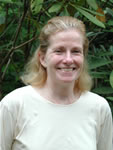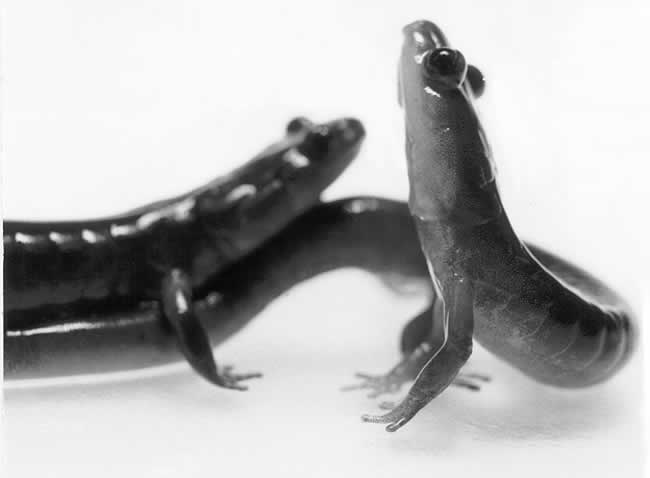| Who We Are |

|
Lynne D. Houck, PI, Dept. Zoology, Oregon State University
With over twenty years experience conducting behavioral assays of pheromone effects in Plethodon shermani and other plethodontid salamanders, Houck has extensive lab and field experience with salamander ecology and behavior. Houck was also the lead PI and supervisor of a recent IRCEB project (“Evolution of a Pheromone Signaling System: From Molecules to Mating”).
|

|
Stevan J. Arnold, Co-PI, Dept. Zoology, Oregon State University
Arnold has extensive experience with plethodontid salamanders and supervised the team that characterized and analyzed pheromone genes on the recent IRCEB project. Arnold also studies the evolution of behavior and morphology using evolutionary quantitative genetics and has broad familiarity with models of sexual selection.
|

|
Richard Watts, Post-doc, Dept. Zoology, Oregon State University
Watts did his doctoral work on the physiology and evolution of hemoglobins. A key participant in the IRCEB project, Watts successfully designed and implemented an expression system for PRF, as well as expression libraries from mental gland and VNO tissue.
|

|
Pamela A. Feldhoff, Co-PI, Dept. Biochemistry, University of Louisville
P. A. Feldhoff is a protein biochemist with extensive experience studying the role of cytokines in the neonatal immune system of mammals, as well as the proteinaceous pheromones of plethodontid salamanders.
|

|
Richard C. Feldhoff, Co-PI, Dept. Biochemistry, University of Louisville
R. C. Feldhoff is a protein biochemist with extensive experience studying cytokines and complement proteins that affect the neonatal immune system of mammals. Feldhoff has collaborated with Houck in their studies of salamander proteins for over twenty years.
|

|
Frank L. Moore, Co-PI, Dept. Zoology, Oregon State University
Moore is a neuroendocrinologist with who has studied the role of hormones in the mating behavior of Taricha salamanders for over 30 years. The isolation and characterization of hormone receptors has been a key element in Moore's research.
|

|
Celeste R. Wirsig-Wiechmann, Co-PI, Dept. Cell Biology, University of Oklahoma
Wirsig-Wiechmann is a neurophysiologist who studies the modulation of sensory systems by hormones using fish and salamanders as model organisms.
|

|
Sarah Woodley, Co-PI, Bayer School of Natural & Environmental Sciences, Duquesne University
Woodley studies the neuroendocrinology of chemical communication and sex behavior, in particular the role of pheromones on reproductive behavior and physiology.
|
 |
Fred Laberge, Co-PI, Brain Research Institute, University of Bremen
Laberge is interested in the brain regions that control behavior in fishes and amphibians, particularly how they integrate sensory input and effect motor patterns. He uses an integrative approach where behavioral experiments are combined with work on descriptive neuroanatomy, functional neuroanatomy and physiology of the nervous system.
|
| |
Ursula Dicke, Co-PI, Brain Research Institute, University of Bremen
|
|
|
|

